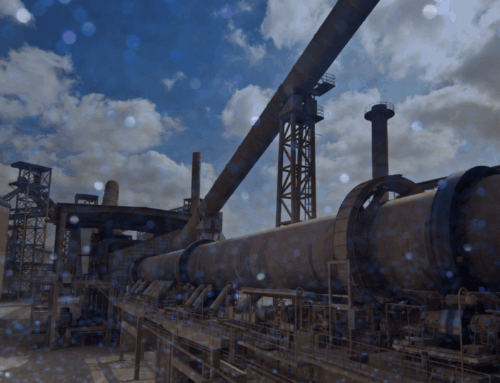Innovation and excellence are part of the DNA of The University of Texas at Austin campus. That culture drives the philosophy in how the Carl J. Eckhardt CHP Complex campus energy team manages operations. They strive not only for stable power systems but also look for innovative, cost-effective ways to support a growing campus with challenging demands.
In this vein, leadership decided to adopt predictive maintenance to help achieve their goals of excellence in providing uninterrupted and cost-effective power for the campus. Not only is total plant energy efficiency important but also in play are the volatility of fuel costs and the cost of operation. Within the industry, 89 percent of failures are random. By implementing predictive maintenance, UT Austin takes the random out of the equation. Rather than relying on preventative, reactive, or unnecessary maintenance, UT Austin wanted access to more actionable intelligence in order to identify equipment failures in advance.
About the University
The University of Texas at Austin campus operates one of North America’s largest and most innovative campus energy plants. The Carl J. Eckhardt Complex includes a combined heat and power (CHP) plant with a 135-MW power capacity that provides 100 percent of the electricity, air conditioning, and heating to the University’s main campus — a 431-acre site serving over 70,000 students, faculty, and staff.
The single largest electrical load on campus is the 60,000-ton chilled water cooling system. This system provides air conditioning to the campus, which has reached peak demand of 33,000 tons. This campus-energy system includes four chilling stations and 9.5-million-gallon chilled thermal water storage tanks.
In 54 Years, UT Austin has had just5campus-wide electrical outages. As a result, it is one of the most reliable systems in the country.
The Opportunity
The Solution: A Predictive Monitoring Solution
To reduce unexpected equipment failures, unplanned maintenance activities, and outage time, UT Austin chose HanAra Software’s HanPHI solution as its condition-based predictive monitoring solution.
Using historical fault-free data, HanAra professionals created advanced models for four boilers, two combustion turbines, and two steam turbines. Through communication with the plant and HanAra’s proprietary correlation engine and algorithm, HanAra created eight models for the Carl J. Eckhardt CHP Complex. Based on UT’s operating condition, HanPHI compares the real-time data collected by the historian software (HanPrism) to these models to determine the health index.
With the health index and early warnings in place, the team now detects hidden failures in advance. This early detection results in increased lead time to plan, schedule, and prioritize maintenance. With the HanPHI SuccessTree feature , the team can determine the root-cause of an anomaly, all the way down to the sensor or tag level.
Why Predictive Analytics?
- Power of big data
- Costs savings
- Operational stability improvements
- Increased performance over routine/time-based maintenance
With the implementation of HanPHI, we now have usable data. Without manual calculations and long hours, we have the ability for deep insight into all of our systems, which allows us to optimize our efficiency.
The HanAra can-do attitude is amazing. Throughout the entire process of installation and configurations, they were dedicated to our outcomes. Not only did they hear what we said, but they also applied it, and improved the product.
Results & Benefits
With the implementation of HanPHI, HanAra provided the UT Austin team with the information to simplify and speed-up the decision-making and maintenance process. With a centralized location for data and the capacity to utilize predictive maintenance, HanPHI also eliminates redundant and unnecessary maintenance and support cost.
HanPHI monitors the system behavior in any condition either running full load or partial load and alerts the team of potential failures. As a result, HanPHI has helped the team reduce unexpected equipment failures. And the university reduce unplanned maintenance activities and outage time by detecting any failures in advance.
In addition, when UT Austin implements new equipment or makes changes to the existing system, HanAra professionals are on hand to guide the UT Austin team in ensuring that HanPHI models accurately reflect the current operating equipment condition. For instance, recently, the HanAra engineers implemented six additional models for the chilling stations as part of expanding the UT Austin team’s holistic view of the complex.
Benefits of HanPHI
- Data analysis to notify of anomalies in real time
- Ability to perform complex analysis of historical data, create patterns, and alert of deviations
- Predictive data modeling
- Early warning of potential failures that increase lead time and prevent unplanned outages or failures
- Reduced maintenance and operation costs
- Improved speed of analysis from minutes to seconds
- Adjustments to improve accuracy and increase system monitoring
- Ongoing training and support
89% of failures in all plants are RANDOM, significantly reducing the success of preventative maintenance procedures.
HanAra Success Stories
How One District Energy Organization Updated Their Data Historian
A case study in modernizing data historian infrastructure for enhanced monitoring, security, and future growth District energy systems are the backbone of efficient heating and cooling for campuses, downtown districts, and industrial complexes. But [...]
Beyond Reactive Maintenance: A Smarter Approach to Wind Farm Operations
Wind energy has established itself as a reliable renewable power source across the globe. But maintaining a fleet of turbines presents different challenges compared to traditional, centralized power generation facilities. Some of the operational [...]
Biomass Plant Enhances Operational Excellence with HanPrism
In the renewable energy sector, biomass facilities face increasingly complex operational challenges that require sophisticated data management solutions. For one facility, growing compliance requirements and the desire for operational improvement led them to seek [...]









